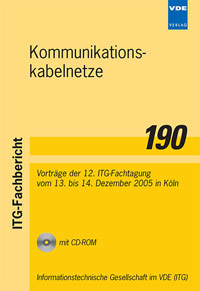Dynamic Simulation of Cable Impact
Konferenz: Kommunikationskabelnetze - 12. ITG-Fachtagung
13.12.2005 - 14.12.2005 in Köln, Germany
Tagungsband: Kommunikationskabelnetze
Seiten: 9Sprache: EnglischTyp: PDF
Persönliche VDE-Mitglieder erhalten auf diesen Artikel 10% Rabatt
Autoren:
Merbach, Gerhard; Stingl, Andreas (RD&E, Corning Cable Systems, Neustadt bei Coburg, Germany)
Inhalt:
In this paper, we discuss the results of a cable impact study. The focus of this investigation is to evaluate the feasibility of theoretically predicting cable impact resistance and to correspondingly develop a cable with good impact performance. Three cable designs were investigated. Central tube and stranded cables were used to represent standard designs and an experimental design with a polymeric cushion layer was developed for absorption of high impact energies. Of various theoretical approaches, an explicit finite element model, generally known as a “crash” simulation, was found to be an effective way to predict the impact performance of fiber optic cables. The comparison of simulation results done prior to cable manufacturing and cable test results show good correlations for the chosen cable designs. Besides the IEC standard impact measurement procedure, nondestructive computer tomography was used to capture images of the deformed cables after impact. This is a reliable way for comparing physical cable deformations and deteriorations to simulated impact results. It is further shown in this paper that explicit finite element impact simulation is an effective way to improve the impact performance of fiber optic cables. The impact performance of a stranded design was improved from 50[JF1] Nm to 120 Nm by introducing a tailored cushion layer.


